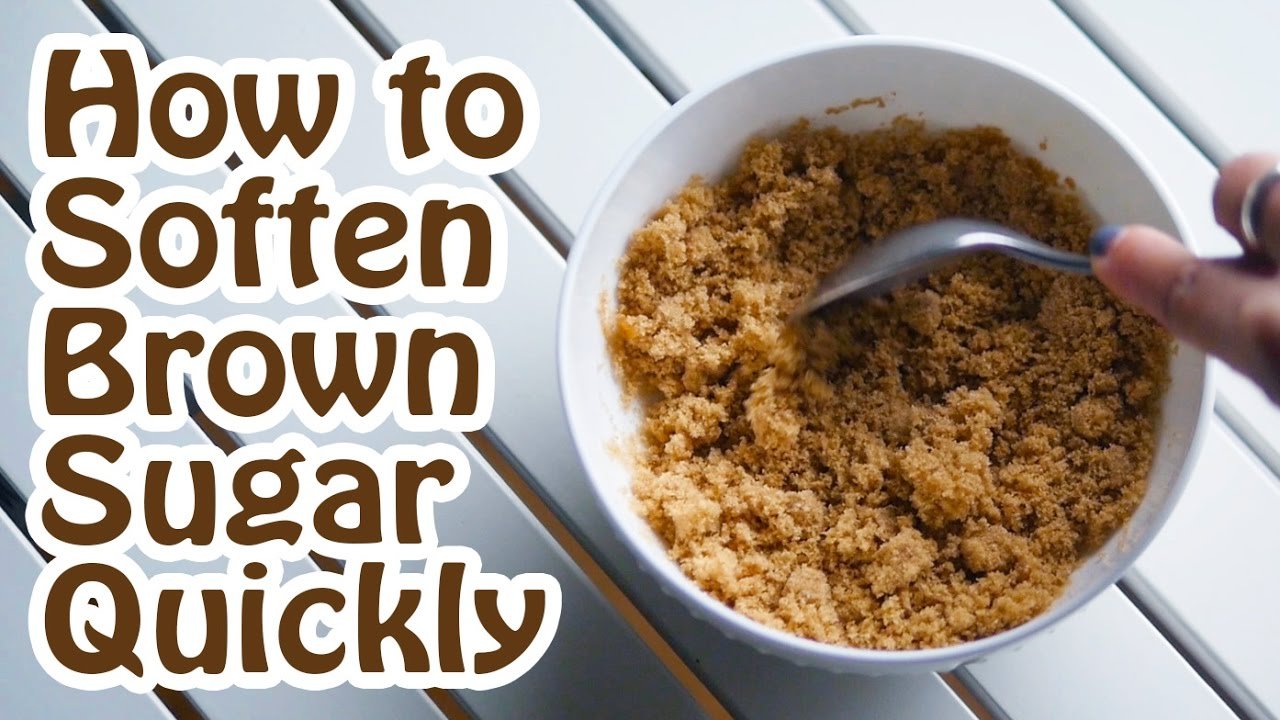How to
How to Soften Brown Sugar: A Comprehensive Guide

Brown sugar, with its moist texture and deep flavor, is a staple ingredient in many kitchens around the world. It adds a unique richness to baked goods, sauces, and marinades, making it a favorite among culinary enthusiasts. However, brown sugar has a notorious tendency to harden into an impenetrable lump, often at the most inconvenient times. This article delves into the reasons behind this common problem and provides a variety of solutions to soften brown sugar, ensuring it remains a versatile and ready-to-use component in your cooking arsenal.
Understanding Why Brown Sugar Hardens
Before diving into the solutions, it’s important to understand why brown sugar hardens. Brown sugar is essentially white sugar with added molasses, which gives it its characteristic color and moisture. This moisture is key to its soft texture. However, when exposed to air, brown sugar loses this moisture through evaporation, leading the sugar crystals to stick together and form hard clumps. The more molasses content the sugar has, the more prone it is to hardening, which is why dark brown sugar tends to harden faster than light brown sugar.
Quick Fixes for Immediate Use
There are times when you reach for your container of brown sugar, only to find it has turned into a solid block. Fear not, for there are quick methods to soften it just in time for your cooking needs.
Microwave Method
One of the quickest ways to soften brown sugar is by using a microwave. Place the hardened brown sugar in a microwave-safe bowl and cover it with a damp paper towel. Microwave it on high for 20-30 seconds at a time, checking and fluffing it with a fork after each interval. Be cautious not to overdo it, as the sugar can melt, creating a sticky mess.
Oven Method
For those who prefer not to use a microwave, the oven offers a viable alternative. Preheat your oven to 250°F (120°C), spread the brown sugar on a baking sheet, and place it in the oven. Check every 5 minutes and break the sugar with a fork as it softens. This method takes a bit longer but is equally effective.
Long-Term Solutions
While quick fixes are useful, finding a long-term solution to keep brown sugar soft is more practical. Here are several methods to prevent your brown sugar from hardening in the first place.
Airtight Containers
Storing brown sugar in an airtight container is crucial to maintaining its moisture. Air exposure is the primary culprit behind sugar hardening, so minimizing it can significantly extend the sugar’s softness. Plastic containers with tight-fitting lids or zip-lock bags are excellent options.
Terra Cotta Brown Sugar Savers
A traditional and natural method to keep brown sugar soft is to use a terra cotta brown sugar saver. These small pieces of terra cotta are soaked in water and then placed in the container with the brown sugar. The terra cotta slowly releases moisture, keeping the sugar at the perfect consistency. Remember to re-soak the terra cotta every few months to keep it effective.
Bread and Marshmallows
An unconventional but effective method involves placing a slice of bread or a few marshmallows in the brown sugar container. Both bread and marshmallows contain moisture that will transfer to the sugar, keeping it soft. Be sure to replace the bread or marshmallows once they become hard to maintain effectiveness.
Reviving Severely Hardened Brown Sugar
In cases where brown sugar has turned into a rock-solid block, all hope is not lost. There are methods to revive even the hardest of sugars.
Grater or Food Processor
For sugar that’s hardened beyond the help of microwaves or ovens, using a grater or food processor can be a lifesaver. Grate the block of sugar or pulse it in a food processor until it returns to its granular form. This method requires a bit of elbow grease but is highly effective.
Rehydration Techniques
If you have time on your hands, rehydrating brown sugar is a passive but surefire way to restore its softness. Place the hardened sugar in a bowl and cover it with a damp cloth overnight. The sugar will absorb the moisture from the cloth, gradually softening it back to its original state.
Conclusion
Hardened brown sugar is a common kitchen dilemma, but it’s one that can be easily solved with a little know-how. Whether you’re in need of a quick fix to soften sugar immediately or looking for long-term storage solutions, the methods outlined in this article can help ensure that your brown sugar remains a soft, pliable, and indispensable part of your culinary toolkit. Remember, the key to soft brown sugar lies in maintaining its moisture. By understanding why brown sugar hardens and how to effectively combat it, you can keep your sugar ready for any recipe that comes your way.
FAQs on How to Soften Brown Sugar
1. Why does brown sugar harden?
Brown sugar hardens because it contains molasses, which is hygroscopic (it absorbs moisture from the air). When exposed to air, the moisture in brown sugar evaporates, causing the sugar crystals to stick together and form hard clumps.
2. How can I quickly soften brown sugar?
For a quick fix, you can use the microwave method by placing the hardened brown sugar in a microwave-safe bowl, covering it with a damp paper towel, and heating it in short intervals, or use the oven method by heating the sugar at a low temperature and breaking it apart as it softens.
3. Are there any natural ways to keep brown sugar soft?
Yes, storing brown sugar with a piece of terra cotta brown sugar saver, a slice of bread, or a few marshmallows can help keep it soft. These items provide moisture which the sugar absorbs, maintaining its soft texture.



















